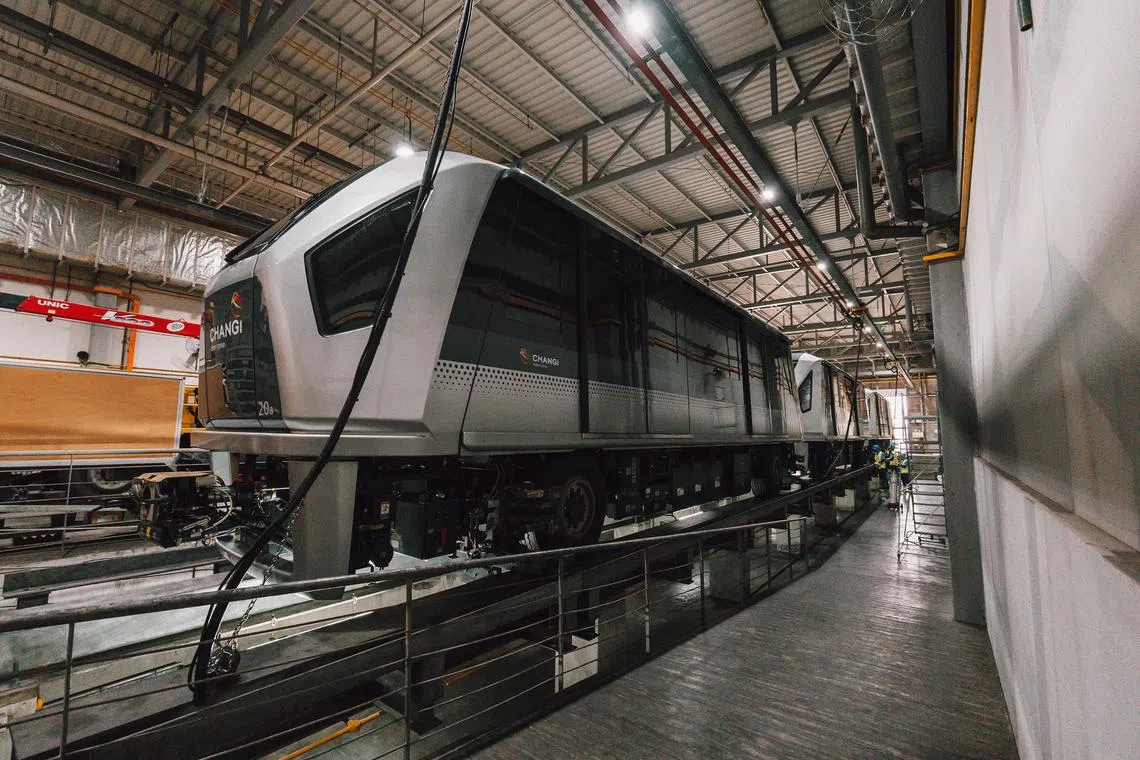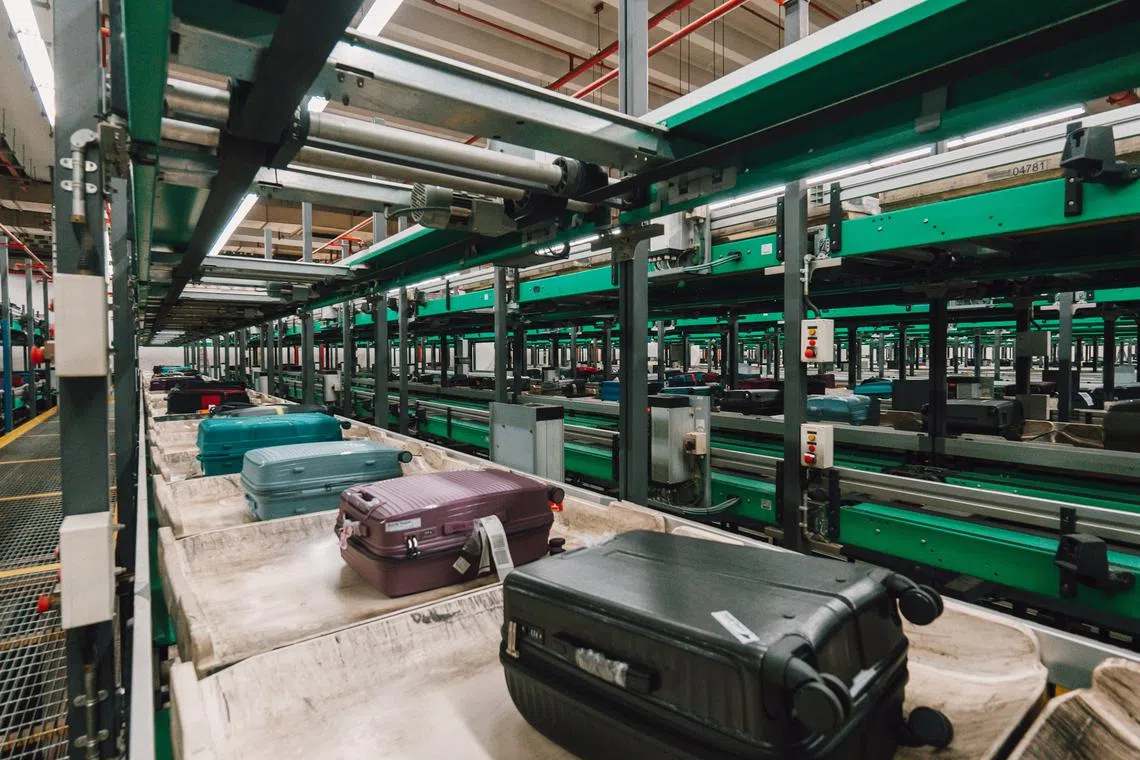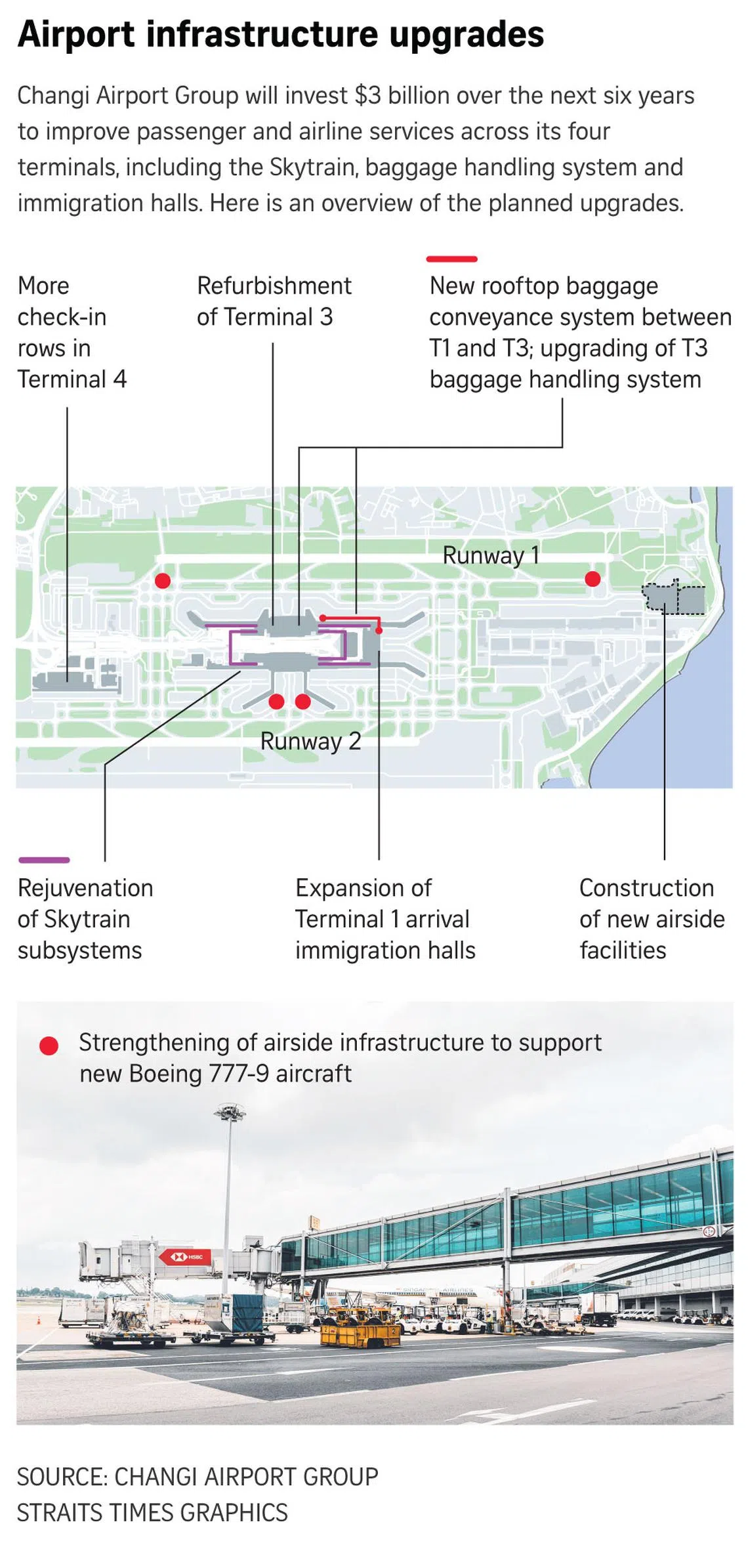$3 billion upgrade: How Changi Airport is planning to stay ahead of the game
Sign up now: Get ST's newsletters delivered to your inbox

Changi Airport Terminal 3's systems and facilities will be updated to maximise handling capacity, improve commercial offerings and boost energy efficiency.
PHOTO: CHANGI AIRPORT GROUP
Follow topic:
SINGAPORE – The passenger experience at Changi Airport is set for a major upgrade, with $3 billion earmarked for improvements to its existing infrastructure over the next six years.
While it will come at the cost of higher fees for passengers and airlines, Changi Airport Group (CAG) said on Nov 7 that the outlay will help Singapore’s air hub stay competitive, especially with other airports in the Asia-Pacific region making similar improvements.
The bulk of the funds will go towards the renewal of key systems and equipment like the Skytrain, which connects Terminals 1, 2, and 3.
Other upgrades include larger immigration halls at T1 and more places for aircraft to park.
New look for Terminal 3
T3 will be more than 20 years old at the end of this decade, and it has not undergone any major refurbishments since it opened in 2008.
CAG said the terminal’s systems and facilities will be updated with the aim of maximising handling capacity, improving its commercial offerings and boosting energy efficiency. More details will be made public later.
Rejuvenating the Skytrain

Various subsystems, including the signalling and communications system, will also be replaced.
PHOTO: CHANGI AIRPORT GROUP
Seven more Skytrain cars will be added to reduce wait times, especially during peak hours, as the number of transit passengers moving between terminals is expected to increase. This will bring the Skytrain fleet to 29 cars.
Various subsystems, including the signalling and communications system, will also be replaced.
The entire light rail system, which has been running since 2007, will need to be overhauled in the late 2030s.
Baggage handling

A new baggage handling system will be built on the rooftops of T1 and T3 to increase capacity and streamline bag transfers between the terminals.
PHOTO: CHANGI AIRPORT GROUP
To be completed by 2029, a new baggage handling system will be built on the rooftops of T1 and T3 to increase capacity and streamline bag transfers between the terminals.
Currently, bags are transferred between T1, T2 and T3 via an underground system, but because there is no direct link between T1 and T3, bags have to be routed through T2.
There is also a risk of congestion as there is only one pathway for moving bags between T1 and T2, compared to two pathways between T2 and T3.
The new rooftop system, which will be able to transport 2,000 bags an hour, will ease the demands on the underground system and reduce the labour needed to tow baggage, CAG noted.
The baggage handling system at T3 will also be upgraded, increasing the number of early check-in bags that can be stored at the airport from 8,000 to 10,000.
Preparing for Boeing 777-9s
With airlines around the world set to introduce Boeing’s latest 777-9 wide-body jets into their fleets, some of the concrete taxiways and aircraft stands at Changi Airport will be reinforced to support the new plane.
This is because the 777-9’s wheel load, which is even greater than the Airbus A380 super jumbo’s, exerts more stress on the airport’s pavements.
About a third of the 189 aircraft stands at the airport, where planes are parked, are already capable of supporting the new aircraft.
Bigger arrival immigration halls at T1
The expansion of the two arrival immigration halls in T1, originally planned for completion by 2025, is now expected to be completed around 2026.
When the project was announced in 2023, CAG said it would increase the number of automated lanes at each immigration hall from 12 to more than 40. It said the larger space will relieve bottlenecks, especially during peak periods.
More check-in rows at Terminal 4
A new check-in row under construction in Terminal 4’s departure hall is slated for completion by the end of 2024.
The new counters, which will come with self-service kiosks and automated bag drops, will increase check-in capacity by 15 per cent and allow T4 to accommodate up to 2,500 passengers every hour.

New airside facilities
More remote parking stands – aircraft parking spaces not physically connected to the terminal – will be built to meet rising demand, bringing Changi’s total to more than 200.
New smart systems will also be introduced to minimise delays in aircraft turnarounds. These systems include automated passenger loading bridges and smart cameras that detect potential delays.
A more attractive workplace
As part of its $3 billion outlay, CAG will also invest in more staff facilities. These include upgraded staff lounges and improvements to the lightning shelters on the tarmac.
Initiatives have also been introduced to improve productivity and create upskilling opportunities. For example, CAG is trialling the use of artificial intelligence for security screenings.



